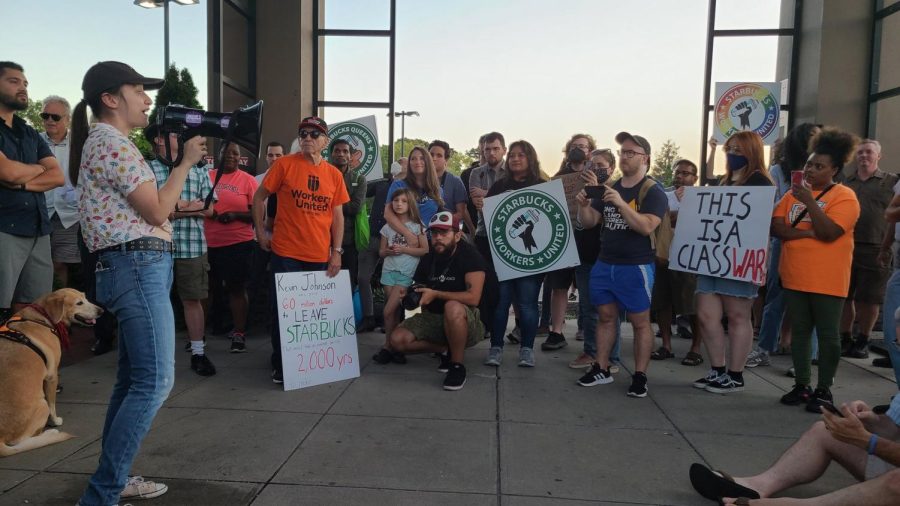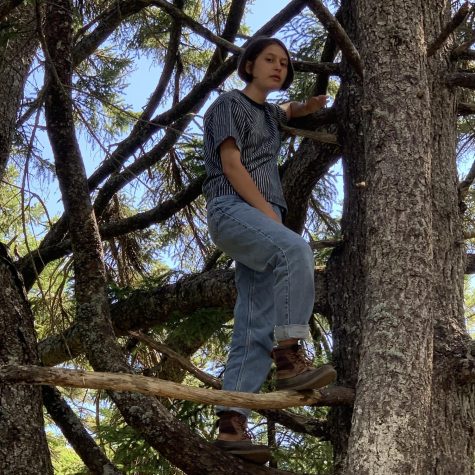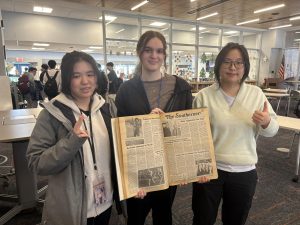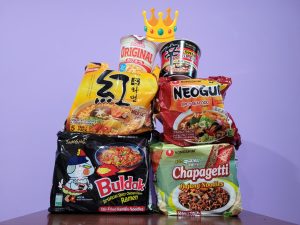Brewing Up a Union
November 16, 2022
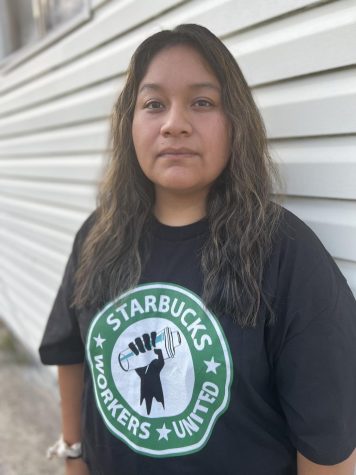
“Rehire Joselyn!”—Protestors gather near Great Neck’s Starbucks location in solidarity with Joselyn Chuquillanqui and the Starbucks Workers United union.
On the intersection of South Middle Neck Road and Great Neck Road, as the setting sun turned the Gardens at Great Neck Shopping Center into gold, a throng of people turned out. It was mid-August, the evening air fresh and warm, and the people, carrying signs and megaphones, quieted to hear a woman speak. Joselyn Chuquillanqui, a former Starbucks employee who was fired for attempting to unionize her workplace, stood in front of the crowd that gathered in solidarity with her. She raised her voice. The people cheered.
Unions—organizations created by and for workers to ensure equal treatment and protection from unfair labor practices—have gained widespread support in the past decade after reaching an all-time low in 2008. Across the country, workers in Amazon warehouses, Apple stores, and Starbucks cafes have begun organizing, with the first Starbucks location unionizing in Buffalo, NY, around August 2021. This historic unionization spawned hundreds of other attempts in Starbucks stores nationwide. Not only did Buffalo prove that a union was possible, but it also showed the benefits baristas stood to gain if they organized. “Once we heard about the Buffalo store, there was talk in the breakroom asking, ‘When are we gonna get these union benefits?’” recalled Chuquillanqui. “I had to be the one to tell them that we don’t have the same benefits [because] we’re not a unionized store.”
And thus began Great Neck’s strive for unionization.
To Chuquillanqui, a union would provide a surefire way to address the issues she saw within the company. “I thought a union was exactly what we needed to ensure the safety of the baristas and to ensure livable wages within the company,” she said. Like with many other industries, the COVID-19 pandemic exposed structural problems within Starbucks that had been festering for years. Baristas being forced to work while sick became much more inexcusable in the presence of a deadly, rapidly spreading virus. And yet baristas still came to work coughing, and management didn’t seem to care. In Great Neck, a barista with COVID-like symptoms but assumedly false-negative test results told management he was going to the Urgent Care to get officially tested for COVID-19. But because of the high likelihood the test would come back positive and force the location to close, he received pushback from his higher-ups. “[Management was] guilting him into coming into work, which he did not do. He did get tested and he did have COVID,” said Chuquillanqui. Small moments like this—empty investigations, ignored complaints, and health concerns for both workers and customers—along with the success of the Buffalo store pushed Chuquillanqui to begin organizing in Great Neck.
Before she initially proposed unionization, however, Chuquillanqui first reached out to the downstate chapter of Workers United, a large union representing many different industries. Then, she contacted lawyers, formed an organizing committee, and got all the paperwork in order for her coworkers—all they needed to do was sign. That was it. “We had 100% of people sign union cards. Everyone was in agreement that this was the best thing for us,” said Chuquillanqui. “Then, we had very intense union busting.”
Starbucks’ anti-union history goes back to the 1980s and baristas’ first unionization attempts. Since then, numerous National Labor Relations Board (NLRB) complaints filed against the company because of illegal anti-union activity resulted in settlements or labor law violations. In Great Neck, the union busting came hard and fast. “They would pick at people’s vulnerabilities,” Chuquillanqui said. Specifically, management would threaten workers’ benefits, saying they would lose their ability to transfer stores, attend Arizona State University (a Starbucks partner school), and even lose their healthcare if the store unionized. Starbucks distributed official anti-union papers to its employees, shared a mandatory video of Howard Schultz, the current Starbucks CEO, and attempted to hold captive audience meetings at the Great Neck store and in surrounding locations that had not even started unionizing yet. Then, as the de facto leader of this unionization attempt, Starbucks began to target Chuquillanqui herself.
“They started vilifying me,” Chuquillanqui said. “They implied that…I was getting thousands of dollars to organize this union, which obviously isn’t true.” Management began deriding her for simple mistakes, like putting the label on the wrong side of the cup, and cutting her hours from forty to around twenty-five. Moreover, as corporate anti-union action picked up, the work environment, which had previously been amiable, became hostile. “There would be false rumors spreading around, things that made it really difficult to work with everyone. It was very high school, almost,” said Chuquillanqui.
Eventually, this all culminated in her firing on July 27th. As at-will employees, any Starbucks worker can be fired for any legal reason, without warning or a just cause. The union vote was lost five to six, as well.
Despite these setbacks, Chuquillanqui, currently taking online classes at Arizona State University and working as a teaching assistant, keeps fighting for workers’ rights and for restitution to Starbucks. “I do believe that we’re going to be unionized.” she said. “[Unionization] doesn’t feel like this is a fight that is worth losing. We deserve the right to feel safe at work. We deserve to be sick. We deserve to not be fired if someone in our family dies and we take too much time off.”
For students who want to support unionization but can’t go without their morning coffee, Chuquillanqui said “I dont think it’s a crime to enjoy your pink drinks before school,” but make sure to state your name as “Union Strong,” or “Organize,” or “Solidarity” instead. Support events like last August’s rally, and show our local baristas that unions have community support. “Solidarity within the community is what helps unions,” said Chuquillanqui. “ It comes to support, even just from high schoolers. You don’t understand how influential anyone is. Keep coming in, and ordering union strong coffee.”

